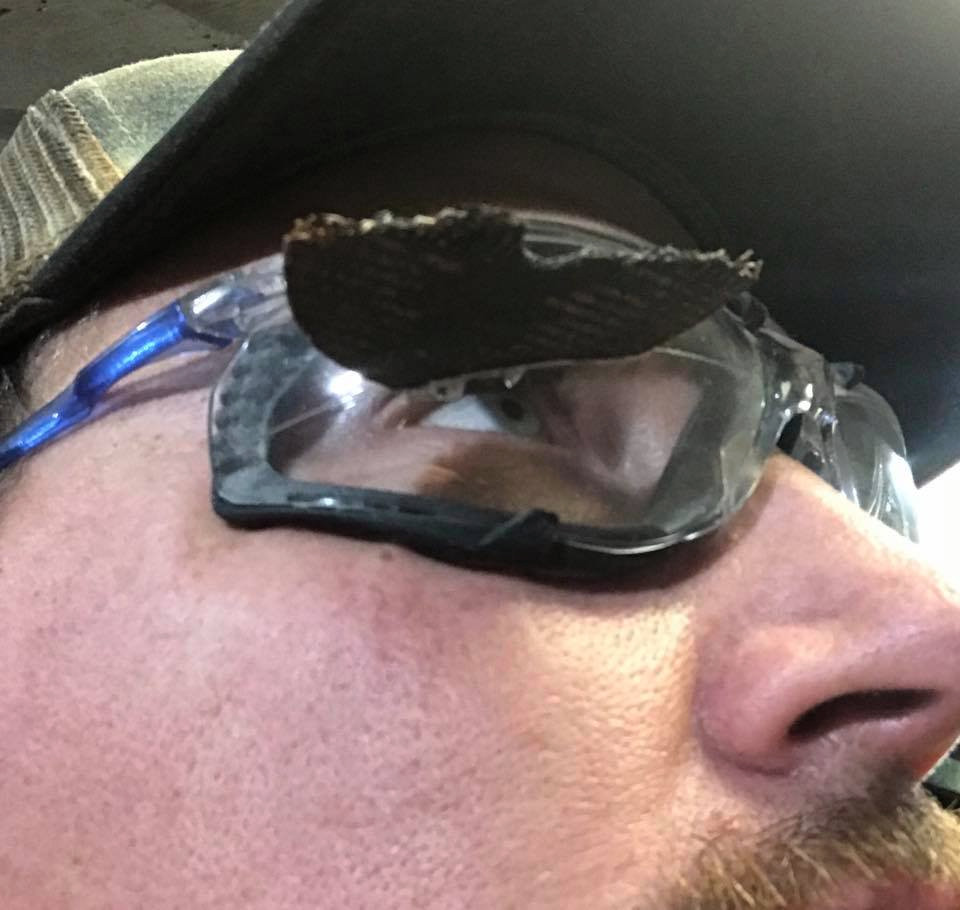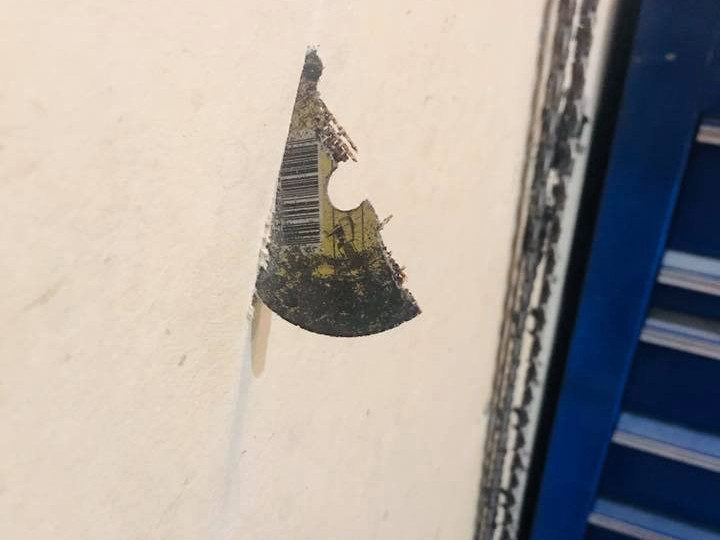
![[M↓]](../../images/markdown.transparent.png) Markdown, makefile
Markdown, makefile Carabiner Types & Loading
Carabiner Types & Loading Anchors Risk Assessment & Method Statement
Anchors Risk Assessment & Method Statement Rope Anchors better than
Rope Anchors better than Anchors on Lousy Buildings
Anchors on Lousy Buildings Anclajes y Descuelgues Sandu Valentín (Vie.)
Anclajes y Descuelgues Sandu Valentín (Vie.) Wide Y‑Hang Rigging
Wide Y‑Hang Rigging Lethal Danger! Via Ferrata
Lethal Danger! Via Ferrata • Steel Carabiners at Anchor
• Steel Carabiners at Anchor Prusik Friction Hitch
Prusik Friction Hitch Pole Climbing with Prusiks &
Pole Climbing with Prusiks & Clip in
Clip in Technical Information (PDF)
Technical Information (PDF) Beware of Horizontal Tension Lines !
Beware of Horizontal Tension Lines ! Rigging Tension Lines
Rigging Tension Lines Trucker’s Hitch with Anchor Hitch
Trucker’s Hitch with Anchor Hitch Basic Manœuvres
Basic Manœuvres Rapid Ascent & Descent without Chest Ascender
Rapid Ascent & Descent without Chest Ascender
 Pull Through from the Top
Pull Through from the Top Pull Through from the Top
Pull Through from the Top Roof Rope Access
Roof Rope Access Pull Through from the Ground
Pull Through from the Ground Throw Line Instructions
Throw Line Instructions Industrial Rope Access Tree Climbing
Industrial Rope Access Tree Climbing Horizontal Aid Climbing
Horizontal Aid Climbing Work Positioning Lanyards
Work Positioning Lanyards Don’t Use a Grigri
Don’t Use a Grigri Pulley Systems
Pulley Systems Haul with a Third Rope
Haul with a Third Rope Industrial
Industrial Rope Access Kit
Rope Access Kit Bystanders Below: Wear Hard Hats!
Bystanders Below: Wear Hard Hats! Basic
Basic Alpine Butterfly Loop Hand Wrap Method
Alpine Butterfly Loop Hand Wrap Method Barrel
Barrel Double Fisherman’s Bend Join Two Ropes
Double Fisherman’s Bend Join Two Ropes Rope Coiling
Rope Coiling Animated Knots
Animated Knots Constrictor
Constrictor Knot Strengths (PDF)
Knot Strengths (PDF) Ladder Safety Rope is Safer
Ladder Safety Rope is Safer Rescue
Rescue Rescue
Rescue Halbmastwurf-Sicherung (HMS, Munter Hitch)
Halbmastwurf-Sicherung (HMS, Munter Hitch) Home
Home
Especially in the United States, tower climbing suffers from a particularly poor safety record. Only since January 2017, American tower workers are required to be 100% tied off, all the time, using for example a double lanyard system.
For this reason, it is recommended to rather adhere to industrial rope access techniques. It is by far the safest climbing technique, which also caters for tower climbing. Industrial rope access techniques were first devised in the nineties to increase the safety of workers on European oil & gas drilling platforms in the North Sea. Nowadays, industrial rope access technicians are employed worldwide in diverse circumstances ranging from building cleaning and maintenance, over construction work to even dam & bridge inspection and installing steel nets on rock faces.
IRATA and SPRAT are the two most prominent certifying bodies for industrial rope access. However, following a week long certification course will be out of reach for most radio amateurs. Luckily, all level 1 course material can be found well explained in videos on the internet (see top of this page).
Falling from heights as low as 2.5 meter (8 feet) can already result in deadly injury or quadriplegia. In Europe, general or personal fall arrest equipment is mandatory at and above this height.
Personally, I find it unacceptable for large amateur radio societies failing to impart safe working at height practices to their members. Recently, the ARRL was even caught publishing unsafe fall arrest practices on the front cover of its QST magazine. Hence, I hope this page will contribute to correcting this situation and perhaps even save some lives. After all, serious HF and VHF contesters alike, all need high towers to render their antennas efficient. Even if you never intend on climbing any towers, many of the knots taught in rope access will result very handy for antenna construction.
Industrial rope access borrows a lot from other climbing techniques that appeared earlier in different settings. For example, Fernand Petzl was a metals mechanist by profession and a passionate caver in his free time. Later in life, he founded the Petzl company, the current market leader and innovator in rope access equipment.
Equally, industrial rope access employs many generic climbing terms and shops selling rope access equipment will typically also carry arborist and sports climbing equipment. It is good to know about these and, more importantly, differentiate between these equipment types. Arborist equipment typically has the highest breaking strength, followed by rope access and finally mountaineering. Moreover, mountaineers typically prefer extremely D-shaped carabiners for their strength to weight ratio, whereas rope access technicians prefer oval-shaped carabiners because these can be used with pulleys.
Industrial rope access remains eerily quiet about how to set out your initial anchors on existing structures. This is where experience and some traditional climbing techniques may proof useful. Contrary to other climbers, industrial rope access technicians are perfectly capable of (self) rescue.
Here is a brief list of somewhat related, but less safe (no backup rope, excessive fall factor) climbing techniques:
The fall factor \(FF\) is the ratio of the distance fallen \(d_{fallen}\) over the length of the securing rope \(l_{rope}\). Under no circumstances should the fall factor be higher than one!
\[FF = \frac{d_{fallen}}{\ell_{rope}}\]


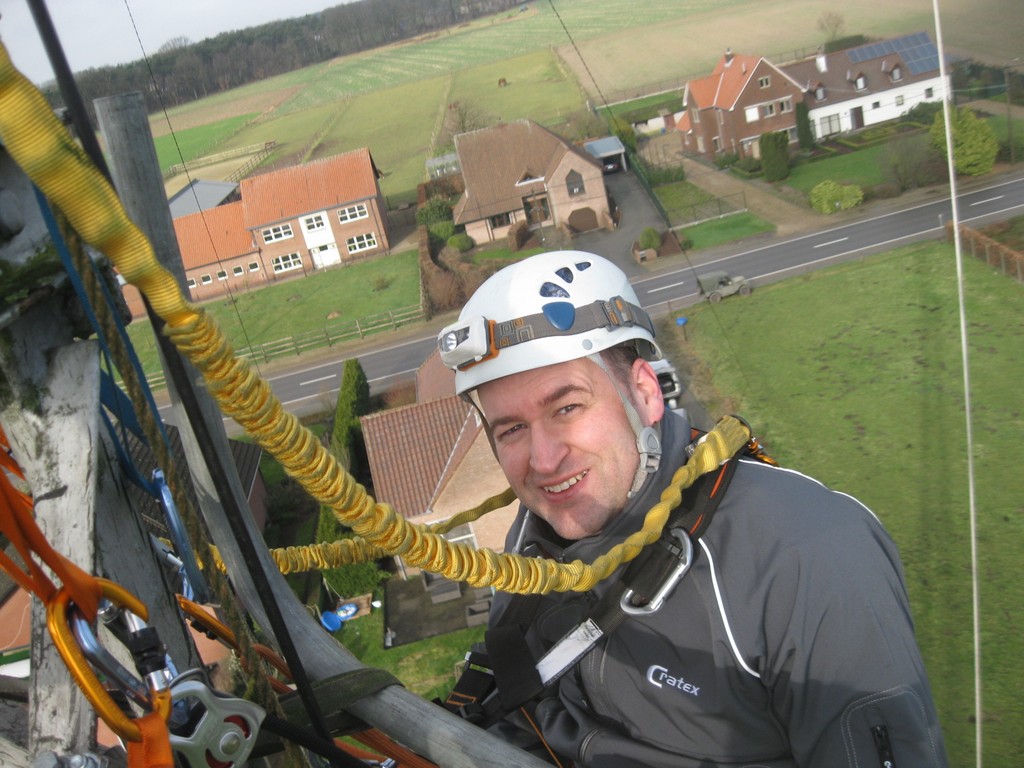
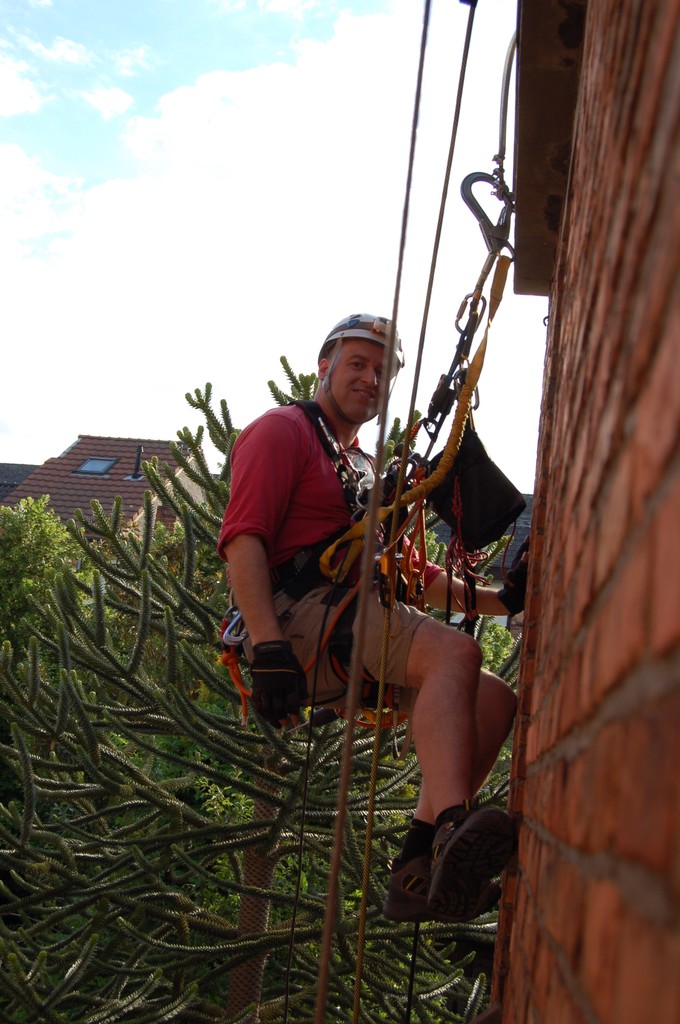
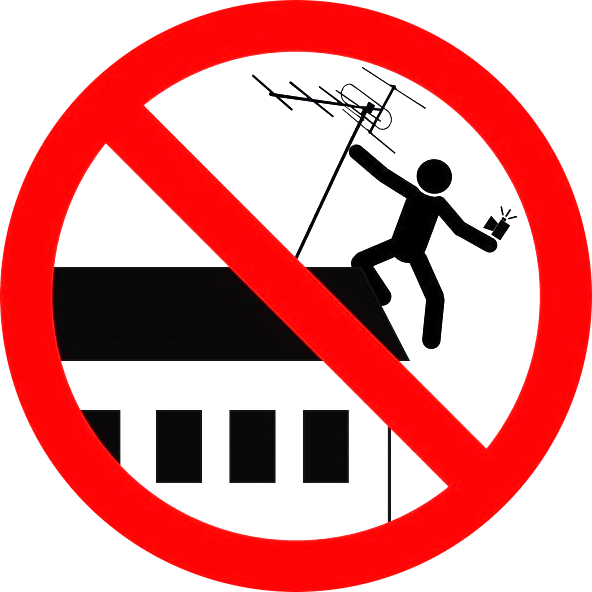
This is Jeremiah. Jeremiah wore safety goggles while angle grinding. Jeremiah still has his right eye. Be like Jeremiah.
